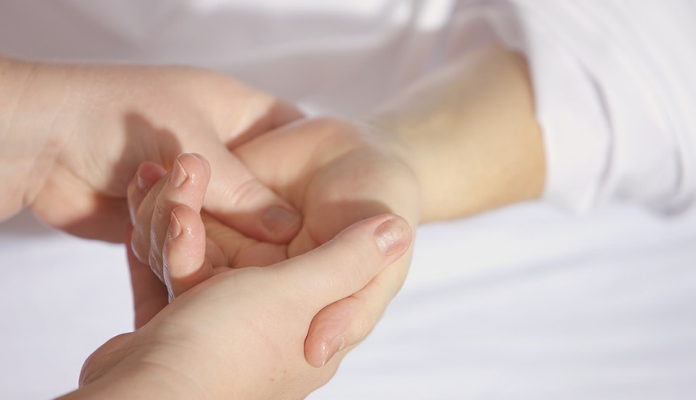Treating Finger Injuries With Physiotherapy
Due to our day-to-day activities, fingers are easily injured and are the most common traumatic injuries one encounters. The injuries may range from simple bruises to contusion or fractures, dislocations or deformities, Injuries to the fingers must be treated immediately as they can lead to permanent deformity and restricted movements. It is important to remember that a proper guided treatment leads to faster and better recovery and restoration.
Causes Of Injury
- Work related activities.
- Household work involving use of machinery.
- Falls or accidents.
- Crushed or lacerated injuries.
- Contact sports like wrestling, football and other high speed sports like skiing. skateboarding and biking.
- Profession involving use of hand tools.
- A blow or direct injury to the finger may cause tendon or ligament damage.
- lnjuries involving fracture or dislocation.
Common Finger Injuries
(Injuries or accidents that result in fractures or dislocation)
- Finger Sprain
Sprains may occur due to tearing of connective tissues like ligaments of one or more joints. - Tendon Injuries
Tendons are the bands which attach muscles to the bones and allow precise movements. Tendons are proceed by a protective sheath and both can be inspired by laceration. - Mallet Finger
The extensor tendon which is the tendon at the back of a finger that keeps it straight When torn away from the distal phalanx, it causes the tip of the finger to sag. And Mallet finger occurs when you cannot straighten your finger. - Boutonniere Deformity
The extensor tendon is torn between the proximal and middle phalanges which make it difficult to straighten the joint between proximal and middle phalanges. - Swan Neck Deformity
The volar ligament present on the palm side of the finger which helps in flexing the finger is torn between the proximal and middle phalanges. As the injury heaìs, ligament laxity develops causing the finger to bend giving a swan neck deformity pattern. - Dupuytren’s Contracture
A condition in which there is the thickening of the tissue below the skin of the palm causing the fingers to stiffen and bend. - Trigger Finger
This condition is characterised by an irritation on the sheath surrounding the flexor tendons. making them itch and release a trigger. - Paroncychia
It is an infection in the area where the fingernail is attached to the linger. - Fingernail Injuries
The nail beds which are supportive tissue under the nail can be damaged by a cut or a blow. There may be a collection of blood under the nail known as subungual hematoma and this can be very painful.
Signs And Symptoms
- Bleeding
- Bruising
- Pain
- Swelling
- Deformity
- Loss of dexterity
- Restricted range of motion
Physiotherapy Management
The initial treatment aims at property resting the injured finger and refraining from activities that are likely to aggravate pain and other symptoms. Appropriate taping technique can be done to stabilize the joint and prevent further damage. Application of ice helps reduce pain and swelling. Post injury strengthening exercises need to be done to make the fingers stronger and also for ease of movement. The following are examples of strengthening exercises:
- Range Of Movement Exercises
These exercises are important to maintain the range of finger movements like bending, straightening, separating and dosing the gap between fingers. - Grip Strengthening Exercises
These exercises help strengthen the fingers and can be done by making a fist with the fingers and holding it for few seconds and then relaxing. A smiley ball or tennis ball can also be used. Squeeze It between the fingers and hold It for few seconds and then relax. Repeat the same. - Picking Up Objects
This is very helpful for movements like writing and typing. It is a simple exercise involving the picking up of small objects like marbles, coins. buttons, pen caps etc with the thumb and the injured finger. - Towel Squeeze Exercise
Take a towel roll and place it on a table. With your hand grab the towel and gently squeeze it for a few seconds and then relax. Repeat the same. - Towel Roll Exercises
Take a small towel and place it on the floor. With your fingers roll the towel towards you until a fist is formed. Hold for a few seconds and then straighten your fingers and relax. Repeat the same.
Prevention
- Learn safe movements and use them to prevent injuries.
- Adopt safety measures when using hand tools.
- Hold objects properly
- Reduce repetitive movements in activities like typing, hammering or knitting.
- Be careful when using sharp objects.
- Exercise religiously to strengthen hand and arm muscles.
